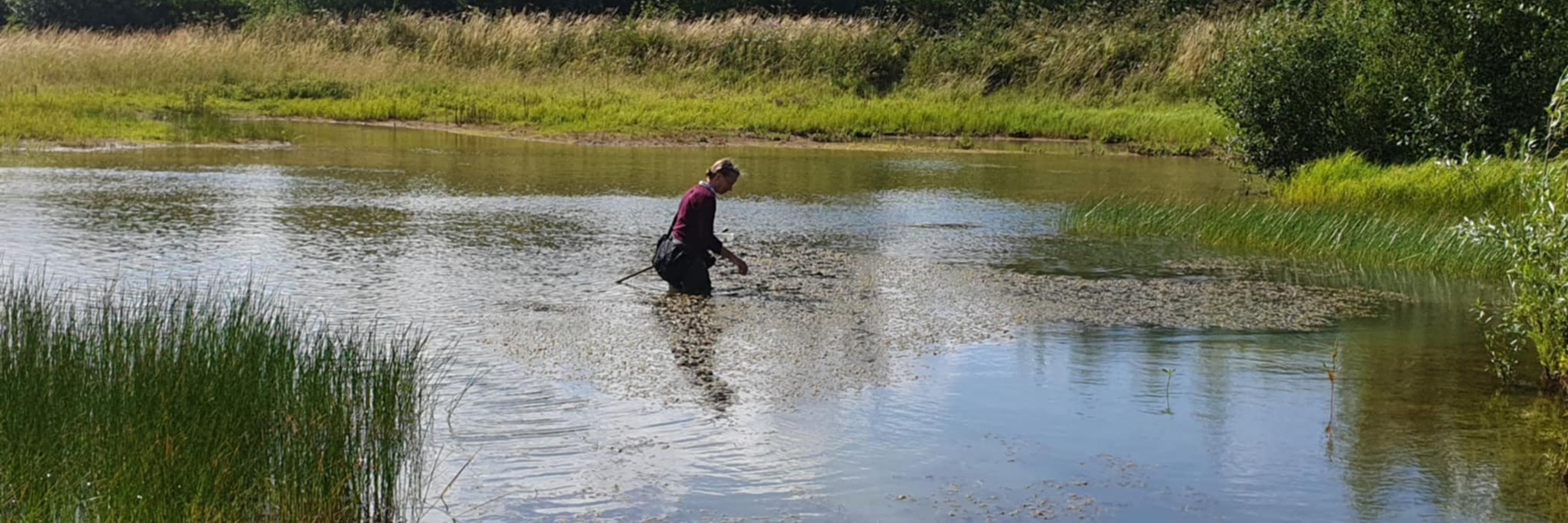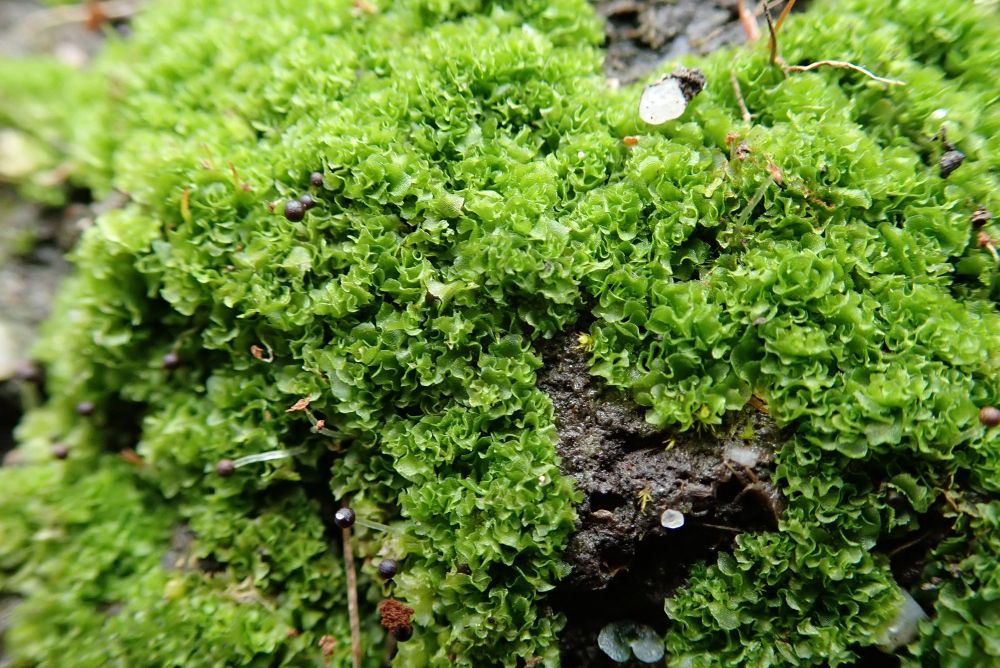
🌱Celebrating the joy of Botany and Bryology.
❤️Aquatic plants & many other. Scarce Tufted-sedge. Plant ecology. Rivers, ponds & lakes.
NE Species Recovery Capital Grant, awarded to HMWT.

NE Species Recovery Capital Grant, awarded to HMWT.

Early planting in very high winter water levels, then months of drought — a real test of resilience, aided by pre-tussock formation.
Still, 71 % establishment success! 💪
@naturalengland.bsky.social

Early planting in very high winter water levels, then months of drought — a real test of resilience, aided by pre-tussock formation.
Still, 71 % establishment success! 💪
@naturalengland.bsky.social
We are beginning to suspect that they can indicate fine habitats, perhaps those of long management continuity.
Ready on Sunday?




We are beginning to suspect that they can indicate fine habitats, perhaps those of long management continuity.
Ready on Sunday?
I wanted to find the Smut fungus Doassansia limosellae, which was last seen in the UK in 1929. No luck though.
Here is Mudwort in flower!
@bsbibotany.bsky.social

I wanted to find the Smut fungus Doassansia limosellae, which was last seen in the UK in 1929. No luck though.
Here is Mudwort in flower!
@bsbibotany.bsky.social
It was with trepidation that I entered the river. Vegetation had grown tall this summer. 2025 was one of the worst for reintroducing a wetland plant. Summer drought followed high winter water.

It was with trepidation that I entered the river. Vegetation had grown tall this summer. 2025 was one of the worst for reintroducing a wetland plant. Summer drought followed high winter water.
A Cladium Mariscus Saw Sedge floating mat in the River Sado, topped with Salix atrocinerea. Other species were Royal Fern (Osmunda regalis), and Marsh Fern (Thelypteris palustris).

A Cladium Mariscus Saw Sedge floating mat in the River Sado, topped with Salix atrocinerea. Other species were Royal Fern (Osmunda regalis), and Marsh Fern (Thelypteris palustris).
Strapwort (Corrigiola litoralis) had been looking very fine. It grew with Coral-necklace (Illecebrum verticillatum) on a path with a seepage running across it. What a lovely plant!

Strapwort (Corrigiola litoralis) had been looking very fine. It grew with Coral-necklace (Illecebrum verticillatum) on a path with a seepage running across it. What a lovely plant!
Luckily, it was fruiting.
A) A. plantago-aquatica= achenes had a single furrow on the back.
B) A. lanceolatum= two furrows.
Answer is A.


Luckily, it was fruiting.
A) A. plantago-aquatica= achenes had a single furrow on the back.
B) A. lanceolatum= two furrows.
Answer is A.


Azolla filiculoides and Lemna gibba fighting it out for supremacy. The Azolla fronds arching upwards to cover the Lemna, and the Lemna becoming as gibbous as possible to prevent this.
They are seemingly resorting to fisticuffs.

Azolla filiculoides and Lemna gibba fighting it out for supremacy. The Azolla fronds arching upwards to cover the Lemna, and the Lemna becoming as gibbous as possible to prevent this.
They are seemingly resorting to fisticuffs.
M. x smithiana (aquatica x spicata x arvense).
With M. x verticillata (arvense x aquatica) nearby and long-gone M. spicata possibly from a nearby garden.

M. x smithiana (aquatica x spicata x arvense).
With M. x verticillata (arvense x aquatica) nearby and long-gone M. spicata possibly from a nearby garden.
Wakehurst Millenium Seed Bank visit by Stephanie Miles & Sarah Willard.
Many thanks Rob Dixon RSPB for facilitating the visit.

Wakehurst Millenium Seed Bank visit by Stephanie Miles & Sarah Willard.
Many thanks Rob Dixon RSPB for facilitating the visit.
A pond that was well botanised, but also decided to take in the algae.
The inlet to the pond with a patchwork of fresh and decaying Zygnema species.


A pond that was well botanised, but also decided to take in the algae.
The inlet to the pond with a patchwork of fresh and decaying Zygnema species.
Just look at the size of the Greater Plantain (Plantago major) I found a short distance away! Must be on steroids or else well-fed and watered.



Just look at the size of the Greater Plantain (Plantago major) I found a short distance away! Must be on steroids or else well-fed and watered.
Told apart by the ripe seed shape. Subspecies neglectum has a gradually tapering apex to the nut. This has definite shoulders.


Told apart by the ripe seed shape. Subspecies neglectum has a gradually tapering apex to the nut. This has definite shoulders.
One pond a sea of Common Stonewort (Chara vulgaris),

One pond a sea of Common Stonewort (Chara vulgaris),



So pleased to see Slender Marsh-bedstraw (Galium constrictum) which again was in a livestock-poached stream edge. A tall, strong specimen waving like a flag.
Pink-tingled buds.

So pleased to see Slender Marsh-bedstraw (Galium constrictum) which again was in a livestock-poached stream edge. A tall, strong specimen waving like a flag.
Pink-tingled buds.
Here I found Square-stalked Willowherb (Epilobium tetragonum). A closer look revealed subsp. lamyi!
Found in a few places...


Here I found Square-stalked Willowherb (Epilobium tetragonum). A closer look revealed subsp. lamyi!
Found in a few places...
New #AJB research by Ian Pearse, Zoe Becker, Paul Ode, John Gaskin & Natalie West
doi.org/10.1002/ajb2... #botany #plantscience #pollen #Brassicaceae

New #AJB research by Ian Pearse, Zoe Becker, Paul Ode, John Gaskin & Natalie West
doi.org/10.1002/ajb2... #botany #plantscience #pollen #Brassicaceae
A beetle version of too many cream cakes!

A beetle version of too many cream cakes!
Amazing how the track ruts retain water even at this time of year!



Amazing how the track ruts retain water even at this time of year!
We really need some rain!

We really need some rain!

